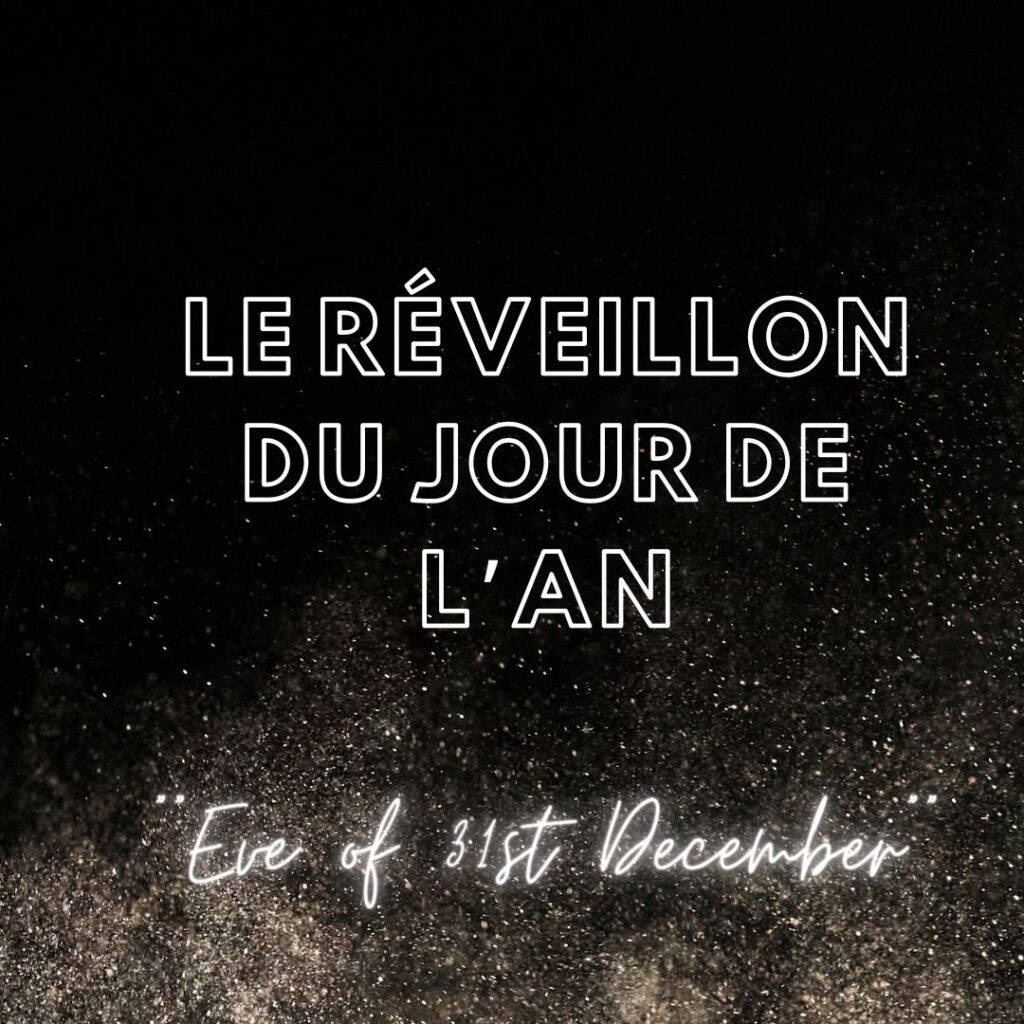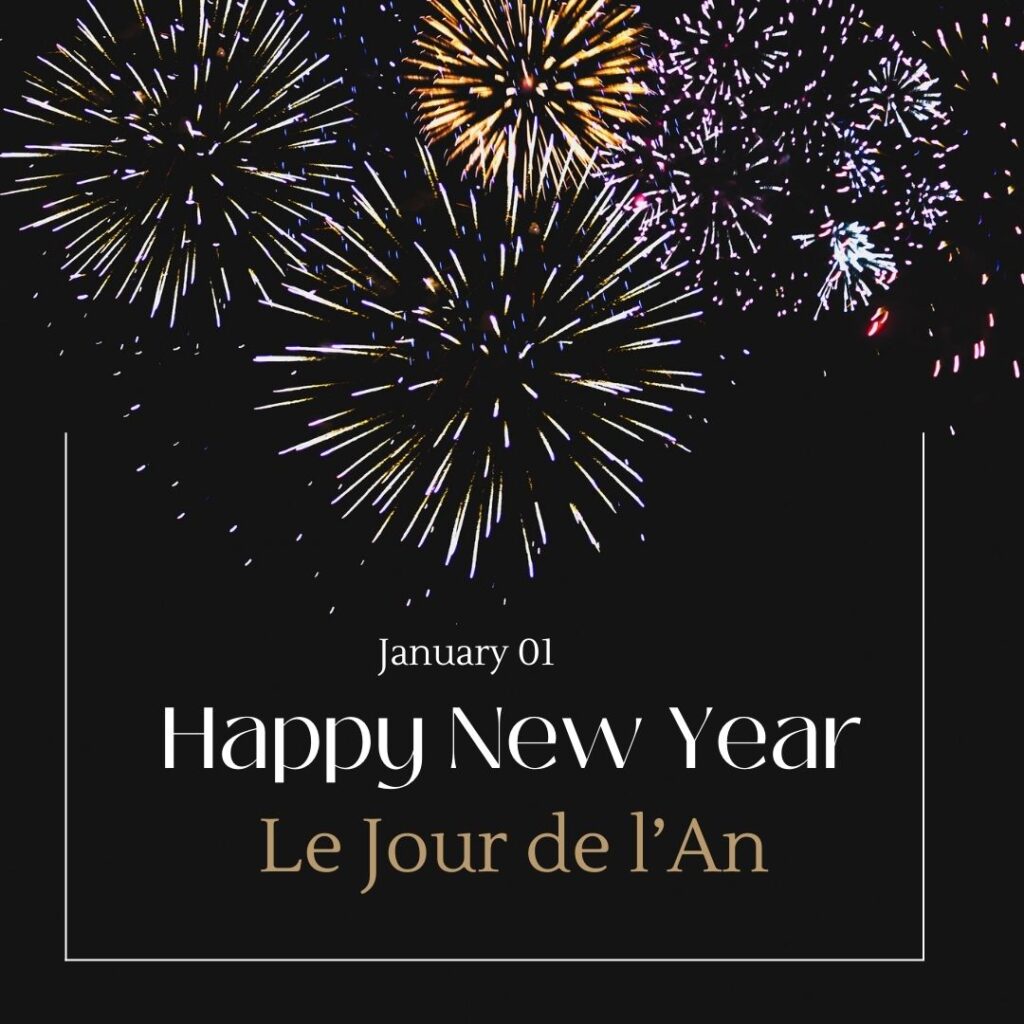In France, the celebration of New Year’s starts on the evening of 31st December, also called “le Réveillon du Jour de l’An” or ” la Saint-Sylvestre” because December 31 is the feast day of Saint Sylvestre.

On New Year’s Eve, certain cities host special events, concerts, or plays that provide both locals and visitors with a variety of entertainment alternatives.
While these customs differ from region to region in France, they always represent a cheerful, celebratory atmosphere and a positive, upbeat welcome to the New Year.

Traditionally, it is spent with the families, friends, and neighbors gathering for a lavish dinner called “le Réveillon“. It’s up to the individual serving style what they serve at a party; a formal dinner or a buffet will undoubtedly be a feast. Delights like foie gras, oysters, shellfish, caviar, and champagne are typically served throughout the dinner. It is common to indulge in a special dessert, such as the Yule log cake, or “La Bûche de Noël”. Just take care not to overindulge in alcohol or you can suffer from a severe gueule de bois (hangover).

Laughter and noise fill the air as revelers fling streamers and confetti, or des cotillons, and enthusiastically blow into a serpentin, which is a streamer tied to a whistle. The traditional custom and beliefs say eating twelve grapes at midnight, one for each hour of the clock, is a traditional belief that is said to bring good fortune for the upcoming months. Some people jot down their wishes on paper, burn it, and then add the ashes to their champagne in the hopes of attracting good fortune. Except for those in intimate relationships, cheek kisses (two or four times) signal the moment as midnight strikes.
Dancing is a popular pastime in many places, and there are often extravagant balls where people dress in ceremonial attire or themed in subject matter.
Spectacular street festivities and fireworks are held across multiple French cities at midnight.
Famous places like the Promenade des Anglais in Nice or the Champs-Élysées in Paris have become vibrant festive hubs. Festive lights and decorations are frequently spotted on public areas and landmarks.

However, there aren’t a lot of traditions to New Year’s Eve in France, but the most common that I have heard is kissing under the mistletoe with countdowns in the background. However, there isn’t an identical occurrence like the Times Square ball dropping as larger cities often host parades or sparklers, and the biggest names in French entertainment often appear on massive novelty shows.

Happy New Year greetings like “Bonne Année!” or “Bonne et Heureuse Année!“ are frequently used. (Happy New Year, and good luck). Saying well wishes for the new year, including “Bonne Santé” (good health) and “Bonne chance” (good luck), is usual.

Gift-giving around the New Year is not customary in France, yet some people still do it. On the other hand, it’s normal to present cash gifts to household staff, law enforcement, postal workers, deliverymen, and other service providers over the holidays and New Year. “Les étrennes,” the amount of these gratuities varies widely based on your generosity, the quality of service you received, and your financial situation.

Furthermore, “Les Résolutions du Nouvel An” (New Year’s resolutions) are customarily made in France. Similar to many cultures France also has this tradition (Les bonnes Résolutions). French people focus on their personal development, well-being, or other objectives when they make resolutions or goals for the next year.
